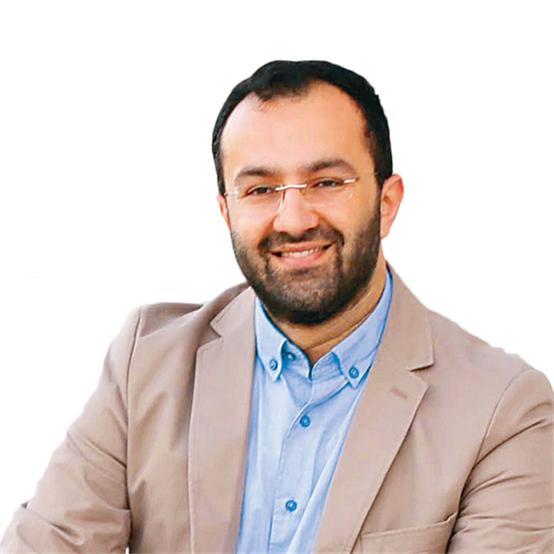The destiny of Ayaz, who was brought to the politically chaotic country of Afghanistan as a slave after being born in today’s Georgia, took a drastic turn when Sultan Mahmood Ghaznawi noticed him. Sultan Mahmood who greatly admired the talents of Ayaz included him in his inner court and trusted him in many critical top-level missions of the state and military. When they conquered Lahore in 1021, after a long and challenging siege, Mahmood Ghaznawi had already decided who was going to govern the city: Ayaz. Ayaz, who accepted this post with the support and trust of the Sultan, built city walls, gates and raised many beautiful buildings throughout the city until the year 1040. The city made important progress in the fields of education and culture in his time and it became a regional hub of literature, particularly poetry.
The “Amir Ayaz Tomb” we visited by passing through a narrow gate next to the historical city walls of Lahore bore few signs of those magnificent times. In order to know who the dweller of the tomb-- which was stuck between two high buildings and what he meant for the city—was, we had to take a thorough tour down the historical alleys of the city.
The second stop on our trip in Lahore was the tomb of Kutb al-din Aybek. Aybek, who was born in Turkestan around the 1150s, was first sold as a slave to a qadi (a judge in a Muslim community) in Nishabur. After changing owners a few times, he was finally bought by Sultan Mohammed of Ghor who was ruling in Afghanistan at the time. Aybek, who added experience to his talents, quickly drew the attention of his new master. He supervised the conquest of India on the order of Mohammed of Ghor, and came to power as “the first Muslim ruler of the Sub Indian continent” in Lahore after Sultan Mohammed was assassinated in 1206. Apart from the many monuments he erected in Delhi, he also developed the city of Lahore, but suddenly passed away in 1210 after he fell from his horse during a polo game, which he was extremely passionate about.
While walking the streets of Lahore, contemplating all these monuments left behind by these figures who rose from slavery up to leadership, we finally arrived at the symbol of the city, Badshahi Mosque. This incredible place of worship, which was built by the sixth ruler of the Mughal Empire, Aurangzeb, and opened in 1673, was the last large monument of the Mughal architecture. Just like Aurangzeb was the last great ruler of the empire, remaining in power for almost 50 years from 1658 to 1707. History describes Aurangzeb as “a powerful ruler who hated useless things, who kept away from harmful and bad habits, who was not fond of worldly things, who was a military genius” and a humble ruler who requested to be buried in an ordinary unmarked grave. While we were conducting our Dhuhr and Asr prayers under an amazing rainfall in the Badshahi Mosque, we once again remembered Aurangzeb Shah with mercy and gratitude.
**
All the signs we have encountered in the streets of Lahore, after the British divided the region in half to make up India and Pakistan, showed that the story too was divided into two at this point. The tomb of Shah Jahan who was born in Lahore in 1592 is in the Indian city of Agra today. Mughal Emperor Akbar Shah who used Lahore as the capital of the empire is the ruler who found the Fatehpur Sikri city of India. Guru Nanak, the founder of the Sikh religion, reached “divine inspiration” in Lahore; however, today the holy city of the Sikh people, Amritsar, is in India. Many similar examples show that, in order to follow the flow of history, you have to follow all the countries of the region at the same time.
When visiting cities with deep historical roots, we shouldn’t get hung up on the general crowd, chaos, noise and the bustle. In order to learn, no other way is possible. Lahore, in this respect, deserves special attention and care. It is a city bearing a myriad of tales in every street, alley, bazaar, mosque, tomb, and temple. It is a city whispering numerous stories to those who are curious….To those who know how to really listen ….
**
We are in Lahore for three days as a guest of my good friend and Director of Turkish Airlines in Lahore Hamid Eldeleklioğlu. Another spot I can’t wait to visit in this city, whose alleys we have been strolling down, whose monumental buildings we have been visiting and the daily life we have become a part of, is the humble cemetery of Abu al-A’lâ Mawdudi (b.1903-d.1979). While you are reading this, hopefully, I will be fulfilling this duty.
Starting from the kindness we were shown when we were obtaining our visas in the embassy in Istanbul, Pakistan is a country in which we experience the sincere attitude and sympathy toward Turkey and Turks. In our next column, let’s talk about the history of Turkish-Pakistani relations, the possibilities and the risks these relations are facing.




















